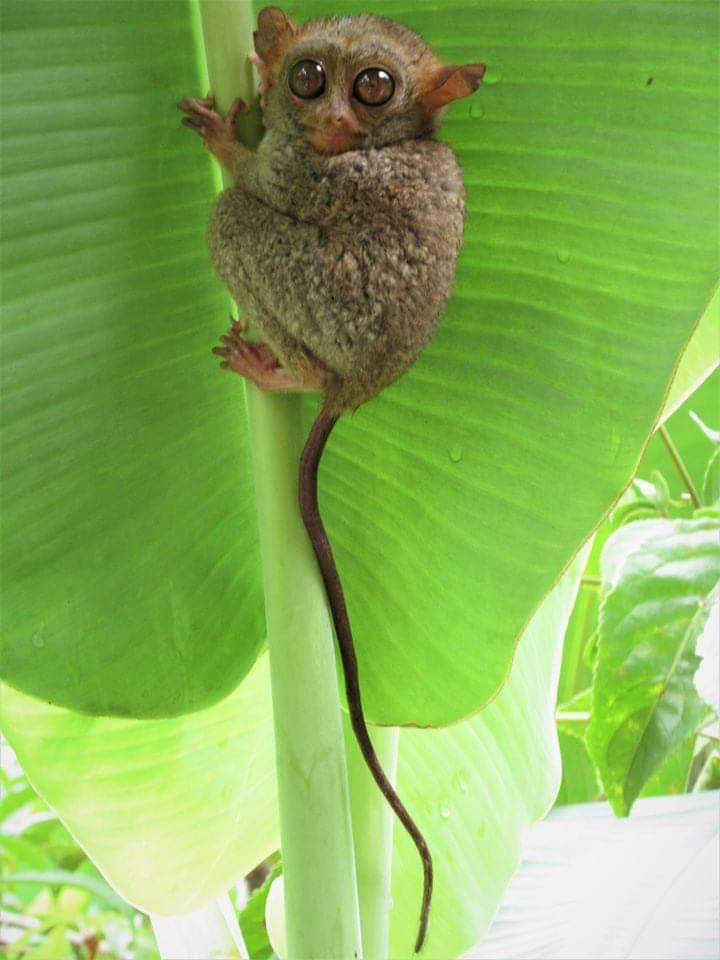
DO NOT DISTURB Visitors at a tarsier sanctuary on the slopes of Mt. Matutum in South Cotabato are encouraged to avoid disturbing the small nocturnal primates. —PHOTO COURTESY OF DENR REGION 12
KORONADAL CITY—Tourists wanting to see a tarsier at a sanctuary on the slopes of Mt. Matutum will be asked to plant a tree during their visit to help ensure the protection and survival of one of the world’s smallest primates.
Starting Christmas Day, walk-in visitors were also no longer allowed inside the tarsier sanctuary at Barangay Linan in Tupi town, South Cotabato province, according to a policy issued by the Department of Environment and Natural Resources through the Protected Area Management Office of Mt. Matutum Protected Landscape (MMPL).
Seedlings provided
Those who wish to see the tarsier will have to coordinate with the MMPL staff to secure visiting schedules, said Mila Calungsod Locsin, administrative chief of South Cotabato’s Provincial Environment and Natural Resources Office. The 13,947-hectare MMPL straddles the towns of Tupi, Tampakan and Polomolok in South Cotabato and Malungon town in Sarangani province.
Locsin said the Tupi Municipal Environment and Natural Resources Office (Menro) would provide seedlings to visitors. She said the local government, through its “voluntourism” program (coined from volunteerism and tourism), was hoping to encourage volunteerism by allowing visitors to plant trees to help preserve the sanctuary.
Forester Gabriel Baute, protected area superintendent, said visitors needed to attend a briefing on the do’s and don’ts in the sanctuary to avoid disturbing the tarsiers in their natural habitat.
“Tarsiers are nocturnal animals, like owls. Hence, they sleep during the day and are active only during the night. That’s why visitors are asked to avoid disturbing these animals when visiting the sanctuary,” Baute said
Just like other wildlife, tarsiers are best left in their natural habitat than being captured or caged as pets, he said.
Tarsiers are known to commit suicide when in captivity (they bang their heads on cages) or when exposed to stressors like camera flashes, human touch and other forms of disturbance, he said.
‘Near threatened’
According to Rolando Visaya, Menro chief, individuals with high regard for the protection and conservation of the country’s biodiversity, especially the tarsier, are most welcome in the sanctuary.
The International Union for Conservation of Nature (IUCN) has listed the tarsier among the “near threatened species,” because of the destruction of their known habitats. The IUCN described its population trend as decreasing.
Former President Fidel Ramos signed Proclamation No. 1030 on June 23, 1997, declaring the Philippine tarsier (Tarsius syrichta) as a specially protected faunal species.
The proclamation mandated the establishment of appropriate sanctuaries to preserve and protect the tarsier, which is found on the islands of Bohol, Samar, Leyte and Mindanao.—EDWIN O. FERNANDEZ